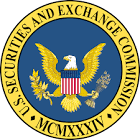TO: Chair@sec.gov
CC: Kurt.VANDENBERGHE@ec.europa.eu, cab-simson-contact@ec.europa.eu, press.president@consilium.europa.eu, info@esma.europa.eu, uscitizensflorence@state.gov, SelectUSA@trade.gov, segr.ufficiostampa@mite.gov.it, EC-RECOVER@ec.europa.eu, comp-greffe-antitrust@ec.europa.eu, cab-gentiloni-contact@ec.europa.eu, frans-timmermans-contact@ec.europa.eu, sostenibilita@terna.it
Florence, Sept. 13th 2022
Chairman Gensler,
days ago ‘Euractiv‘ reported that a “non paper” circulated by the European Commission.
Shown below some key passages:
- “This paper analyses two possible instruments of emergency price caps on gas in the context of a further supply disruption of natural gas supply from Russia in the autumn” (p .1)
- “The Dutch Title Transfer Facility (TTF) gas contract prices are widely used in the EU gas market as an index for long-term contracts. Its represtativeness of the European gas market has been questioned in the last months due to bottlenecks in Northwestern Europe …” (p. 1)
- “The impacts of a legal imposition of a price cap on Russian gas imports on the current contracts with Gazprom are uncertain” (p. 5)
- “The TTF is operated by the Dutch gas TSO, Gasunie Transport Service (GTS). Trading of the Dutch system is organized either bilaterally between traders (shippers) or through organized energy exchanges (such as The Intercontinental Exchange – ICE)… Taken together all trades, including derivatives, annual trading volumes make up more than 100 times (!) the gas consumption in the Netherlands and are 10 times higher than the entire EU consumpion. Around 80% of these trades are organized by ICE with the rest arranged for by brokers (so called over-the-counter trading – OTC). Most of this gas is traded in form of derivatives (mostly financial futures)” (p. 10)
The objective of the “non paper” is that “Europeans regions could be labelled according to the severity of the impacts of the disruption with red (higher exposure to disruption) and green zones (lower exposure to disruption). The red zone would be made up of Member States where prices could strongly rise above the prices observed on TTF index following a full disruption of Russian gas supplies and eventually entering into the emergency level”.
As already mentioned last week to the European Council (see below), a similar approach was forwarded last October (as US citizen) to President Biden, stating that areas “will be colored based upon energy consumption”.
Needless to say, if we ended up in a sort of cul-de-sac (“EU energy crisis is becoming systemic”), it’s also due to ESMA‘s endless daydreaming.
On June 15th a tweet from @USCGFlorence was sent in order to give hints on how to invest in the USA, and last August the ‘Inflation Reduction Act’ has been signed to mitigate energy prices for retail consumers.
Therefore, any potential investor in green economy probably would appreciate if by the U.S. Securities and Exchange Commission there will be an investigation on the role of ‘The Intercontinental Exchange‘ (as well Gazprom), regarding the above mentioned energy crisis.
Sincerely
